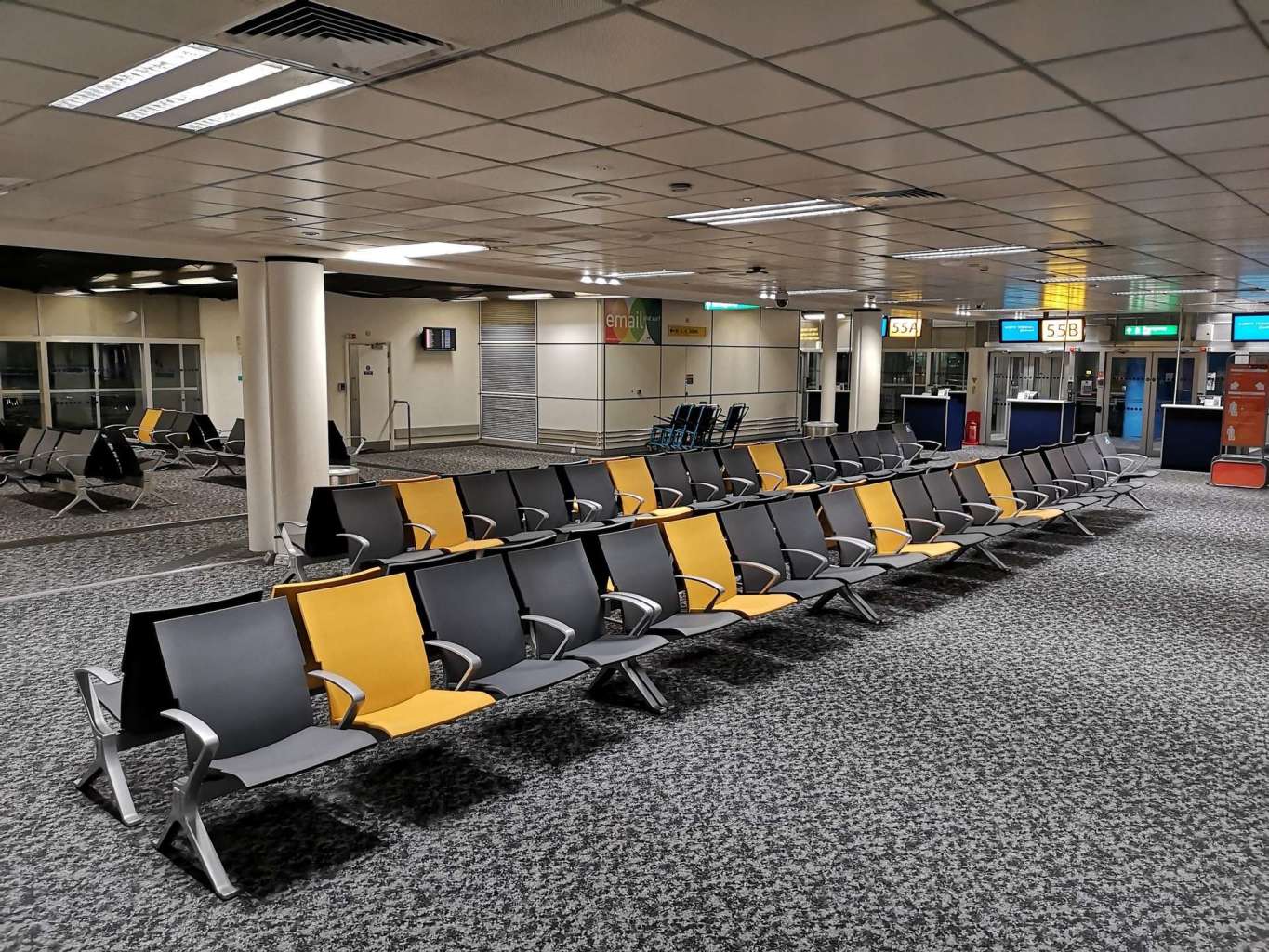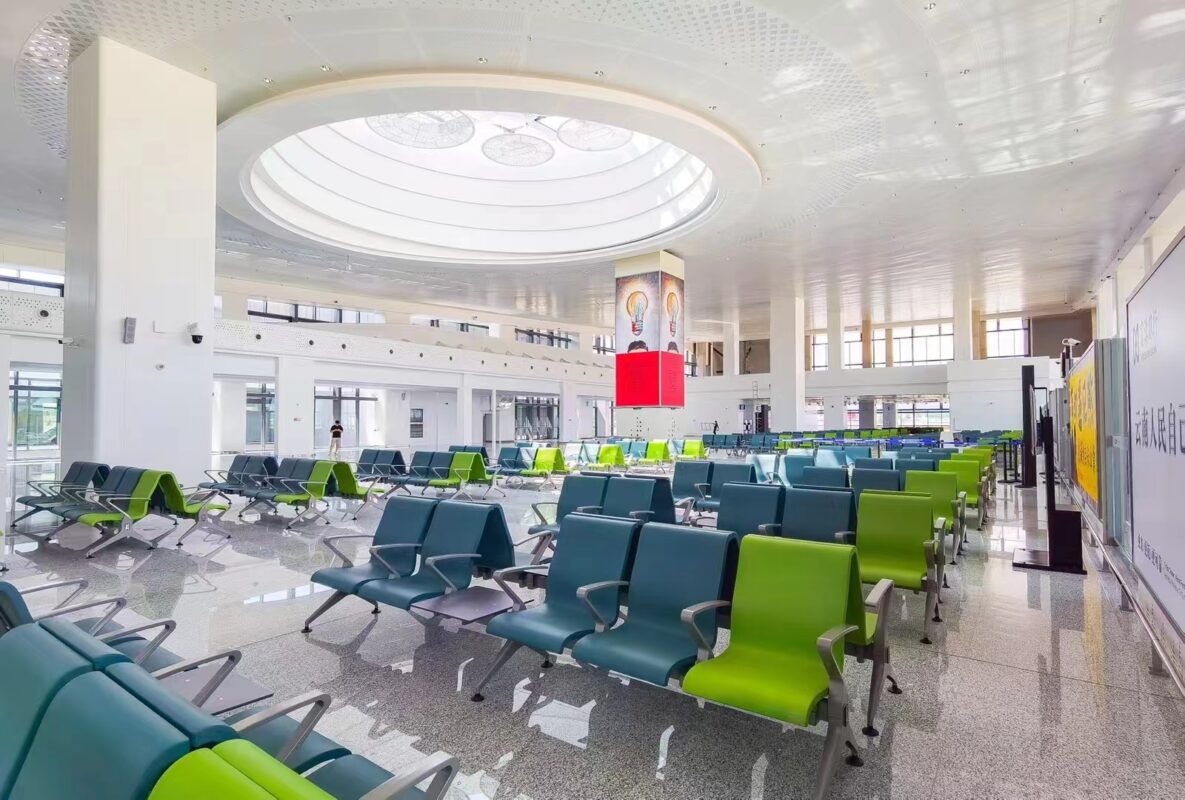In the construction and renovation of modern airports, airport waiting chairs are no longer merely practical facilities for passengers to rest temporarily. They have gradually evolved into an integral part of the overall airport experience and a powerful tool for enhancing the commercial value of airports. Excellent waiting chair design not only optimizes the passenger waiting experience but also generates significant direct and indirect benefits for airports through multi-dimensional strategies.
1. Monetizing Traffic: From “Waiting” to “Engagement.”
Airports accommodate tens of thousands, or even hundreds of thousands, of passengers daily, and airport waiting chairs are one of the areas where passengers spend the most time. Traditional seats only fulfill basic functions, while smart, scenario-based designs can directly engage users:
Digital Interactive Screens: Ads or QR codes embedded in seat armrests can promote duty-free store discounts, VIP lounge services, and local tourism packages, with revenue generated based on click-through rates or conversion rates.
Wireless Charging + Member Portal: Free charging services are provided, but passengers must scan a QR code to follow the brand’s official account or register as members, thereby driving traffic to merchants.
Dynamic Zoning: Seat colors or signage (e.g., “Business Zone” and “Family Zone”) guide passengers to nearby commercial areas, increasing foot traffic to stores.
Translated with DeepL.com (free version)

2. Flexible layout optimization for improved space utilization.
Traditional airport waiting chairs often waste a significant amount of space due to their fixed, rigid layout. Modern designs emphasize modular layouts, allowing different areas to be flexibly adjusted to accommodate peak and off-peak passenger flow demands, thereby improving space utilization efficiency. For example, first-class waiting lounges can be equipped with more private, high-end seating units, while public waiting areas can adopt modular seating arrangements to enhance transparency and facilitate maintenance. This localized custom design solution helps airports plan waiting areas more efficiently and release more commercial space.
3. Brand collaboration: New cross-industry collaboration models.
Seats can serve as innovative media for brand exposure, attracting cross-industry collaboration:
Technology brands: Sponsor smart seats with built-in tablets or voice assistants (e.g., “Tmall Genie Seats”);
Healthcare brands: Promote ergonomic design and print health tips on seat backs to reinforce professional imagery;
City culture and tourism: Design unique seats incorporating local cultural elements (e.g., Dunhuang mural-themed seats) to attract photography and promote tourism.
Case study: Singapore Changi Airport collaborated with an automotive brand to design “cockpit-style” seats. The offline experience increased test drive bookings by 25%.
Translated with DeepL.com (free version)

